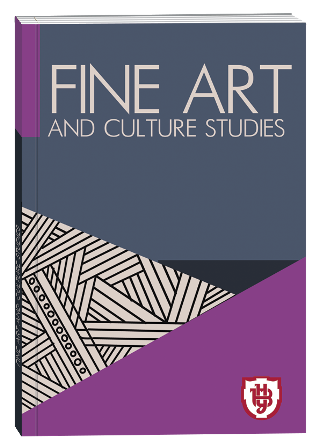MODERN FORMS OF MARKETING AND THEIR APPLICATION IN THE MUSIC FESTIVAL MOVEMENT
DOI:
https://doi.org/10.32782/facs-2024-1-8Keywords:
marketing, music festival movement, marketing forms, strategies, tools.Abstract
The purpose of the article is to define and analyze modern marketing forms, strategies and tools that contribute to the development and popularization of the festival movement. Namely: content marketing, influence marketing, data driven marketing, experiential marketing, use of music digital platforms. The research methodology calls for the identification of elements related to the organization of marketing activity using a number of interdependent methods and approaches: analysis, synthesis, generalization as general scientific methods and psychological and art studies. The scientific novelty consists in the definition and analysis of modern marketing forms and the selection of a number of tools for their application in popularizing the festival movement. Conclusions. The article highlights and analyzes effective forms of marketing that play an important role in promoting music festivals and increasing their popularity. Namely, the analyzed forms of music marketing include: content marketing – creation and distribution of valuable and interesting content with the help of which festivals can increase their visibility, create organic hype and provide deep impressions to potential audiences; influence marketing technology includes sponsored content: guest performances, support of advertising campaigns, influential personalities, which effectively increases the involvement of established fan bases, awareness of the festival, which stimulates ticket sales; data-driven marketing uses data analysis and is based on information that ensures that festivals are targeted to the right audience, resulting in increased return on marketing investment and increased festival success; experiential marketing focuses on creating unique interactions that have a lasting impact on festival goers. This can include interactive installations, virtual reality experiences, augmented reality activations, artist meetings, exclusive backstage access, competitions and other sensory activities. By offering unusual experiences, festivals can stand out and create a sense of exclusivity. The main strategies for popularizing the festival movement include the promotion of music content as digital music in network services and music platforms. Through social media marketing, influencer collaboration, content creation, experiential activation and digital data-driven strategies, festivals can effectively engage with their target audience, increase attendance and develop a profitable long-term.
References
Виноградова О. Сучасні види маркетингу. Навчальний посібник. Київ: ДУТ, 2019. 265 с.
Маркетинг. Вікіпедія. URL: https://uk.wikipedia.org/wiki/Маркетинг (дата звернення: 19.01.2024).
Музика. Словник української мови. URL: https://slovnyk.ua/index.php?swrd=Музика (дата звернення: 22.01.2024).
Полюга В. Філософія музики (форми і методи осмислення музичного буття). Актуальні питання гуманітарних наук. 2022. Вип. 48. т. 2., С. 36–42. DOI: 10.24919/2308-4863/48-2-6 (дата звернення: 20.01.2024).
Aspray William; Ceruzzi Paul Е. The Internet and American business. Cambridge, Mass.: The MIT Press, 2008. P. 84.
Jared Gee. Colonial Encounters in Albert Camus: Algeria and Limits of Freedom. Journal of Camus Studies, 2016.
URL: https://web.archive.org/web/20180103211848/http://camus-society.com/camus-society-journal/ (дата звернення: 04.01.2024).
Music Business Association, 2024. URL: http://musicbiz.org/(дата звернення: 22.01.2024).
Reynolds, Cormac. Social, Streaming & On-Demand: Key Trends in the Music Industry Today. April 9–11 / SMW. 2023. URL: http://socialmediaweek.org/blog/2015/06/social-streaming-demand-ketrendsmusic-industry-today/ (дата звернення: 22.01.2024).







